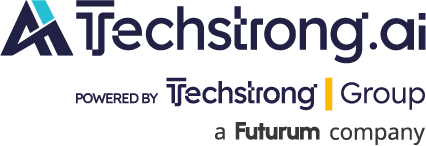
Artificial intelligence may be dominating headlines—and boardroom agendas—but amid the hype, one truth is often overlooked: AI is only as powerful as the data infrastructure beneath it. While large language models and generative applications captivate imaginations, the real determinant of success lies in how effectively an organization can harness, manage, and move its data.
For all the talk of AI transformation, too many enterprises are still wrestling with fragmented data ecosystems—silos, legacy systems, and inconsistent governance policies. These aren’t just technical debt; they are strategic liabilities.
Without an intelligent data infrastructure, AI becomes an aspiration rather than a reality.
The Foundation of AI Is Data
AI doesn’t generate insights from thin air—it depends on enormous volumes of structured and unstructured data, often spread across clouds, geographies, and business units. The quality, provenance, and classification of the data used are all crucial elements. Models trained on stale, incomplete, or inaccessible data produce inaccurate outputs. Worse, models trained on unsecured data introduce compliance risks and potential ethical concerns.
Infrastructure is the connective tissue between raw data and AI-driven outcomes. It ensures data is available where and when it’s needed, moves efficiently across environments, and is protected, governed, and trusted throughout its lifecycle.
The Hidden Costs of Fragmentation
Consider a typical scenario: an organization is piloting AI to improve customer experience. Marketing wants behavioral insights, product teams want feature usage analytics, and legal needs to ensure regulatory compliance. But their data lives in different systems, with different access controls, formats, and SLAs.
This fragmented architecture not only slows down development—it undermines the integrity of the model itself. You can’t build a rocket on shifting sand. And yet, many enterprises are trying to build AI workflows on infrastructure that was never designed for the velocity, variety, and volume of modern data.
AI Is a Workflow—Not a Tool
Too often, organizations view AI as a tool they can bolt onto existing processes. In reality, AI is a workflow that cuts across the data pipeline—from ingestion and labeling to training, inferencing, and iteration. To succeed, every step must be optimized and integrated.
This requires data infrastructure that’s hybrid-capable by design, with consistent data services across on-premises and cloud. It requires the right level of performance that can keep up with GPU-hungry training models in the most cost-effective way, and automation to handle data movement and lifecycle management. Most importantly, it requires governance frameworks that secure and catalog data without impeding access for those who need it.
From Chaos to Clarity
Leading organizations aren’t just building AI—they’re re-architecting around it. That means adopting infrastructure that’s intelligent, agile, and built for the future. At NetApp, we see enterprises making this shift by consolidating data silos, simplifying operations, and integrating AI workloads into their broader data strategy.
They’re not doing it by chance—they’re doing it by design. By prioritizing data infrastructure as the first step in their AI journey, they’re turning data chaos into clarity, and experiments into outcomes.
Architecting Effective AI
AI is not a destination—it’s a capability that must be earned.
Enterprises that fail to modernize their data foundation will find themselves stuck in proof-of-concept purgatory. Those who get it right, however, will not only accelerate innovation—they’ll lead it.
AI success doesn’t start with the algorithm. It starts with the intelligent data infrastructure.

